SUMMER | FALL 2022

FEATURING ‘SUPER’ WINES FROM BOLGHERI AND BEYOND PLUS INTERVIEWS WITH BARBARA WIDMER AND SILVIO JERMANN


FEATURING ‘SUPER’ WINES FROM BOLGHERI AND BEYOND PLUS INTERVIEWS WITH BARBARA WIDMER AND SILVIO JERMANN
You may be familiar with our portfolio of Italian estates: Allegrini, Argiano, Brancaia, Jermann, Pieropan, Poggio al Tesoro, Ratti, and Tornatore.
But, in March, we underwent a redesign of our importer lookand-feel, adopting our new name: Maze Row Wine Merchant. At the same time, we introduced our first California project, a new collaboration with Randall Grahm called ‘The Language of Yes.’
Along with these updates, we launched a newsletter and updated social channels to bring you stories about art, architecture, travel, sommelier profiles, food, and plenty more. So much great content, which will culminate with the release of our semi-annual magazine, VOICES Scan the QR code below for access to our first issue, along with links to our instagram, trade resources, and more.
We’re so proud of the work and whether you buy our wines, or just love wine in general, we hope you’ll check us out.
With this first seasonal catalogue as Maze Row, we are featuring a collection of ‘supers’ from our portfolio, including Brancaia’s top IGT wine from Tuscany, Poggio al Tesoro’s flagship bottling from Bolgheri, and one of Jermann’s legendary ‘Super Whites.’
We also sit down with Brancaia’s owner and winemaker, Barbara Widmer, to discuss her sustainability practices, and Silvio Jermann reflects on his legacy as he enters a new chapter with his partnership with Antinori.
Enjoy, and from all of us at Maze Row, have a wonderful rest of the summer. May this ‘vintage’ be among your best.
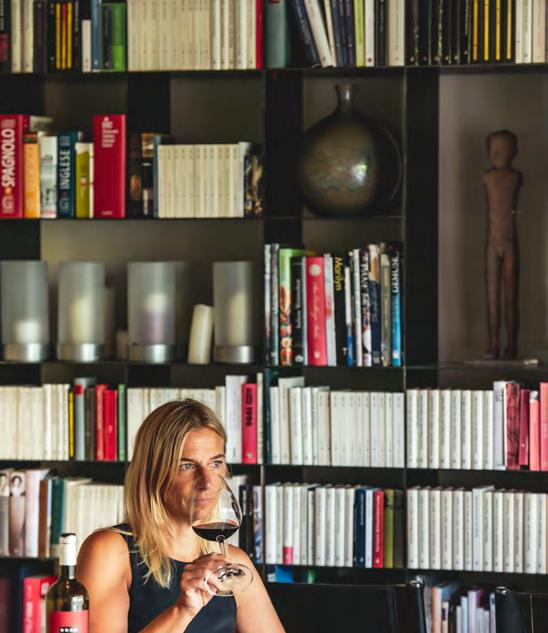

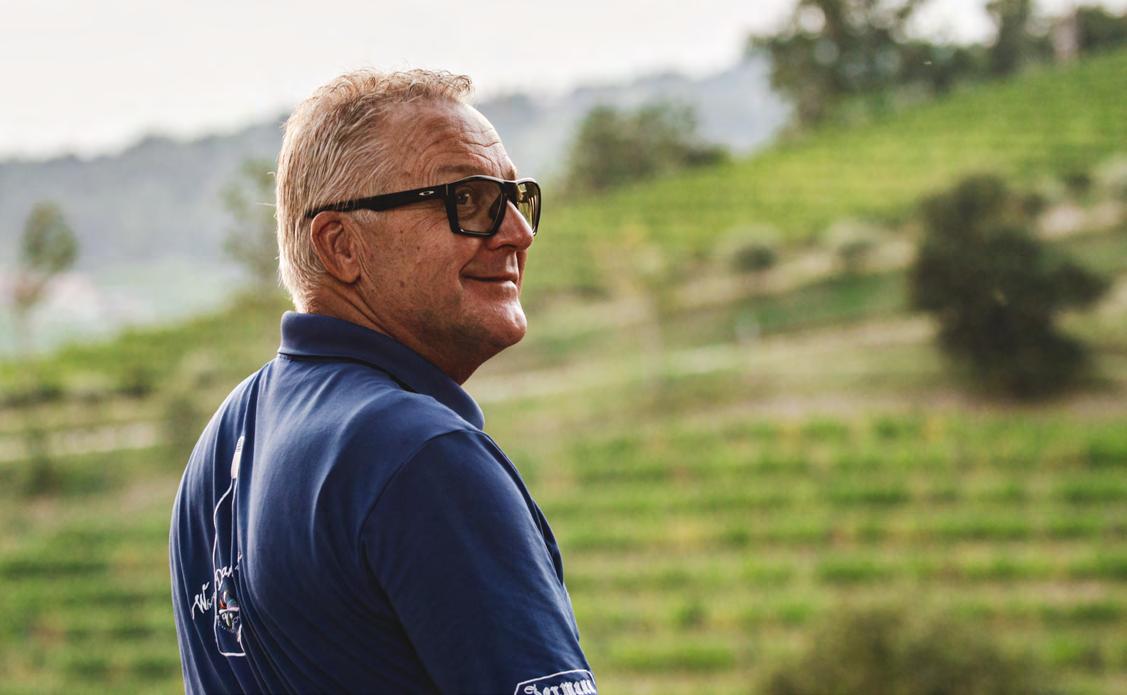 CLOCKWISE FROM TOP: SILVIO JERMANN IN HIS VINEYARDS; POGGIO AL TESORO’S SONDRAIA; BARBARA WIDMER AT HOME IN CHIANTI
CLOCKWISE FROM TOP: SILVIO JERMANN IN HIS VINEYARDS; POGGIO AL TESORO’S SONDRAIA; BARBARA WIDMER AT HOME IN CHIANTI
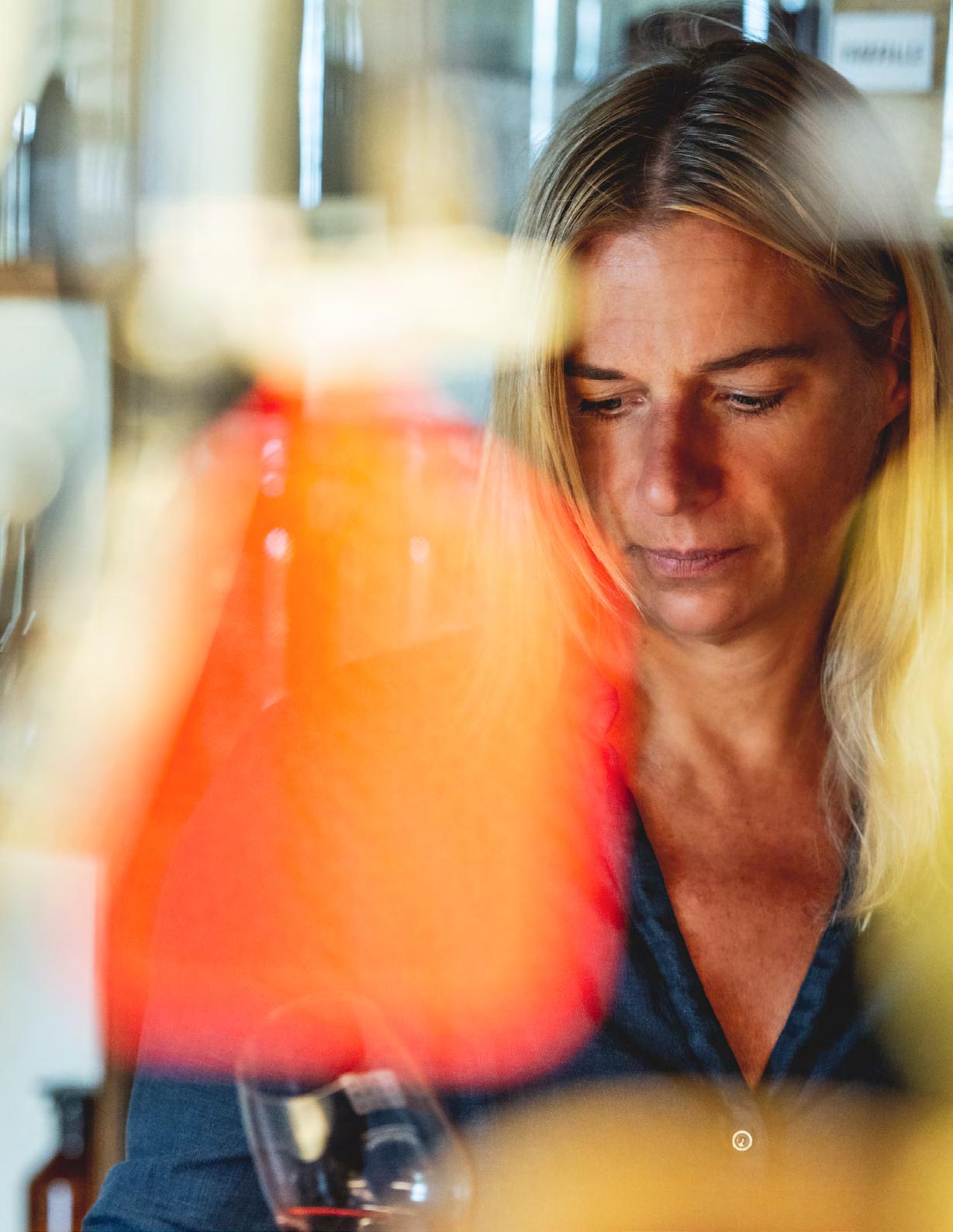
Let’s get right to it: what are your impressions of the 2019 Il Blu?
On the nose you get blueberry, prune, some ripe fruit, herbs and tobacco, even dark chocolate. You will find very similar flavors in the mouth. As a winemaker and wine lover, I like finding the same, or even more concentrated flavors that are on the nose, in the mouth. With Il Blu there is a lot of mature tannins, and beautiful acidity for a round and smooth wine. The 2019 already shows its great potential, but will, of course, with some bottle aging show its entire beauty.
What can you tell us about the 2019 vintage overall?
It was a great year for all of Tuscany. In 2019, all the steps in nature that are necessary for making great wines, came together perfectly.
Wine, after all, happens first in the vineyard, and here the success is down to Mother Nature. As winemakers, many of the steps – the growing, the blooming, climate, a sudden frost – are not in our hands. All our work in the vineyards is focusing on the best possible quality.
Of course, Mother Nature plays an important role. The flowering was perfect in 2019, there was no late frost, and the summer was beautiful with some rain before the August heat, all of which resulted in fantastic grapes. In 2019, nature allowed us to make outstanding wines, from our Tre to Il Blu.
That must have been a relief, although I sense that you also like a little challenge.
Sometimes not having an easy year can be exciting; we have to work harder for best possible results. As a winemaker you can prove your knowledge more with a challenging vintage than with an easy one. If you couldn’t make an outstanding wine in 2019, then you should probably give up winemaking.
Can you speak to why Il Blu is the ultimate expression of Brancaia and the winery’s philosophy?
Il Blu is important to us for many reasons. Let me start with its unique label. Thirty years ago, few in the
wine world were convinced this could be a wine label. Slowly but surely people started to see the beauty and the simplicity of its design. It still looks modern, which makes it timeless, and there is no bigger compliment than timeless!
The wine and its composition have changed since the first Il Blu, released in 1988. How do you see it evolving further?
Even though Il Blu represents where Brancaia likes to be, the wine has changed a lot in the last 30 years. Back then we wanted to show the best side of the Chianti Classico region which is without doubt Sangiovese focused wines. So we set out to do the best with this grape.
In the first years we made the wine using 80% Sangiovese and the rest Merlot, so as to give it more roundness, complexity and depth. Then slowly we added more Merlot, and in 1998 introduced some Cabernet Sauvignon. For a long while Il Blu was a blend of 60% Sangiovese, 35% Merlot and the rest Cabernet Sauvignon.
Our Merlot has improved so much: the average age of the vines in our Chianti Classico vineyards is 30 years old which means the fruit is more concentrated. This is also true of our Sangiovese vines.
Therefore, the new rules, the quality of grapes in our vineyards, and changes within myself as a winemaker, have led me to push Il Blu more on the Merlot side. So much so that the wine is now made with 80% Merlot, 10% Sangiovese and 10% Cabernet Sauvignon – almost the opposite to what we did 30 years ago. Meanwhile, we were able to use the Sangiovese grapes to improve the quality of our Chianti Classico Riserva and add the Gran Selezione to our portfolio.
I believe Il Blu has become even more elegant and profound with time. As a style of wine, it remains the same, representing the most elegant and complex wine in our portfolio.
We grow Merlot in Castellina and in Radda. The Castellina soil is more profound so the grapes are very round and can over ripen. But in Radda, the higher altitude, cooler air, more rain and stony soil allow the grapes to gain beautiful blueberry flavors, to be more elegant, more classic, have higher acidity, be more powerful and retain a certain freshness.
You adopted organic farming methods very early in your career as a winemaker. What benefits do you see from ecological practices in the vineyard?
We see a lot of benefits not only in the grape quality, but also the vines are healthier, the soil is healthier since there is no monoculture, while the grasses and wildflowers attract insects, wildlife and birds who eat the insects. We see the vine is connecting with the soil and can resist extreme weather conditions much better, while the older plants can more easily adapt and resist change. It’s about the harmony of nature.
You mentioned your older vines are now 30 and that, since 2017, you have been working with the Massal Selection method, replanting new vineyards with cuttings from your exceptional old vines from the same plot. Can you explain the process?
We select the best vines from each of our vineyards, examine them in the laboratory to see if they are as healthy as they look, then do a micro fermentation to
“IN THE CELLAR YOU HAVE TO ACCEPT WHAT THE GRAPE IS, UNDERSTAND AND FOLLOW IT THE BEST YOU CAN, BUT NOT DO TOO MUCH. IT’S A FINE BALANCE.”
find out if they taste as good. We do this process over five years. We then reproduce our own vines based on the selected best for all our new plantings. The method makes sense, as these older vines have adapted to the specific plot and their microclimates, are therefore more resilient, and we believe this method of replanting creates stronger vines.
The other thing you are extremely keen on is dry farming – cultivation without irrigation. Can you talk through the benefits?
Dry farming is extremely important to me. I may have to change my ways one day, but so far in Tuscany this is possible – that is if you plant the right grape variety in the right spot. There are obvious ecological benefits since you don’t waste water. But even if I would care less about nature, I truly believe the quality of the grape is more interesting and links better to the terroir. Dry farming intensifies the flavors of the grape varieties but also the flavors of the vineyard, the spot. With irrigation you may give up some of the typicity of the spot.
When you irrigate, everything matures a bit faster, so you have to pick the fruit a few days earlier as they ripen quicker. Without irrigation the grapes get to stay on the vine a little longer, gaining more flavor and structure. More importantly, with irrigation the vine roots stay at the top of the soil; they don’t need to dig deep down and therefore won’t be so linked to the soil.
I truly believe the focus of a winery should not only be on making outstanding wines – there are good wines all over the world these days – but in creating unique wines expressing the character of the terroir. And the one thing I can do is to link Brancaia wines to our vineyards, connect them to the soil. No one else can
produce the same wines. They are unique to this place. Can you explain your approach to winemaking in the cellar?
We don’t stop dreaming until we pick the grape – after then we stop dreaming. You can’t do too much in the vineyards but you can in the cellar. In the cellar you have to accept what the grape is, understand and follow it the best you can, but not do too much. It’s a fine balance.
The most challenging part of being a winemaker is to be committed to what you want to do, but at the same time have an open mind.
This sounds like the most creative and artistic side of what you do…
Yes absolutely. In the cellar we want to maintain the typicity with each plot. So, we pick each plot separately, with every vineyard undergoing natural or spontaneous fermentation separately. This means we don’t add any bought yeast. Instead, we create yeast naturally from the vineyard, a practice we’ve worked on since 2008.
The composition of the flora is quite different in a cooler and rainier vintage than dryer ones, so they adapt to nature and will therefore adapt better than a bought yeast when in the cellar. We also feel this method further adds to the typicity of our vintages.
We want to make outstanding wine with a maximum link to where we are. I do think winemaking at the higher level is more philosophy than science. Nothing we do can be reproduced. Each vintage is unique.

 Brancaia’s estate in Radda in Chianti
Brancaia’s estate in Radda in Chianti
The 2019 vintage was an excellent one in Tuscany. It’s widely considered to be - along with 2015 and 2016among the three best of the last decade.
After a mild winter, spring was rainy with low temperatures, pushing back flowering and bud break more than a week later than usual. However, in May, the conditions turned very warm and stayed there through the rest of the summer. Thanks to the wet spring, the vines underwent no significant stress during the heat of the summer, helped along by a rainy night at the end of July which occurred just before it got too dry. August was warm and September saw slight amounts of rain with cool nights that brought the grapes into balance.
Harvest for the Merlot occurred in mid-September, followed by the Sangiovese in the latter half of the month. Harvest was concluded in the first week of October with Cabernet Sauvignon. Both quality and quantity were high.
GRAPES Merlot (80%), Sangiovese (10%), Cabernet Sauvignon (10%)
Radda & Castellina; Galestro (Radda) & loamy clay (Castellina); 270-450m asl; Spurred Cordon; Dry-farmed; Organic viticulture
FERMENTATION Spontaneous in stainless steel
AGEING 18 months in new & used barriques, 3 months in concrete after assemblage; 12 months in bottle
FINISHING Filtered & Unfined
PRODUCTION 42,000 bottles
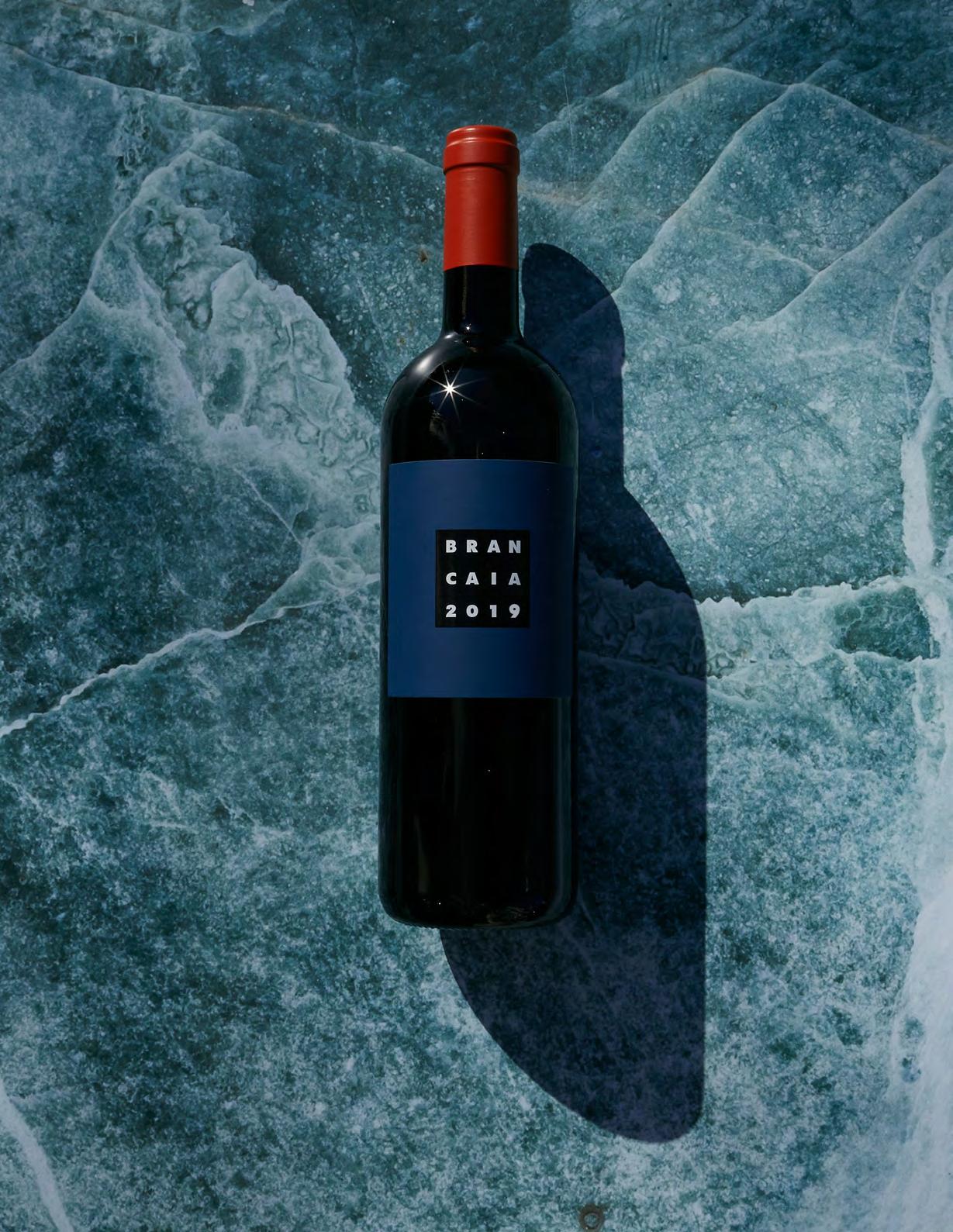

The Bolgheri DOC is just a little over 25 years old, making it among the youngest officially recognized wine regions in Italy. And yet, the bottlings from this small, quiet section of the Tuscan coast command the highest prices per capita in the country
Why? Of course, it comes down to quality; Bolgheri is making some of the most complex and ageworthy wines in the world.
But broad excelllence doesn’t just happen - it must be protected and fostered; and this is where Bolgheri, as a region, stands apart.
The Bolgheri DOC is a small place; in 1998, the overall vineyard area was only 180 ha; now, there are about 1,500 hectares of vineyards delimited within the Bolgheri DOC. While this is incredible growth in a short time, the appellation is now ‘closed,’ meaning it will not be expanded. It remains roughly the same size as the Stag’s Leap District in Napa Valley.
Adding to this sense of intimacy: the consortium that oversees the DOC is a close-knit contingency of just 66 producers, and, as noted by Monica Larner in Wine Advocate, “Unity among producers is the highest I have seen in the dozens of wine regions I visit each year across Italy.” (July 2022).
The result is a commitment to quality and an unparalleled sense of stewardship. Overwhelmingly,
there is a clear sense of place that spans across the region (look for a trademark iron-laced mineral note in any bottling from Bolgheri), but individual producer identities always shine through - in other words, the region maintains an excellent balance of typicity and terroir, with producers that seek not just quality, but greatness.
Bolgheri is a patchwork of varying soil types that run from an undulating alluvial plane in the west (closer to the ocean) to higher altitude, iron-rich rocks in the east. For the most classic expressions from Bolgheri, look for bottlings that come from vineyards ‘suprastrada’ (literally, ‘above the road,’ referencing the sector of Bolgheri east of the famous Cypress-lined road that bisects the region). The soils here are rockier with a higher percentage of limestone, resulting in the more structured wines that made the region famous.
This doesn’t mean the wines from ‘sudestrada’ (‘below the road’) aren’t worth your time; in fact, they can be more round and ‘ready,’ representing excellent value and versailtily in a region too often defined by price.
For a proper introduction, Poggio al Tesoro - Marilisa Allegrini’s estate in Bolgheri - offers wines from four different vineyards in the appellation, all with a different cépage. Try (or cellar) her Cabernet-based Sondraia bottling for Bolgheri’s power and elegance, or her Merlot-led Il Seggio for something more supple.
WITH POWERFUL BORDEAUX-STYLE BLENDS, BOLGHERI HAS QUICKLY BECOME A ‘MUST-HAVE’ APPELLATION FOR SERIOUS COLLECTORS. BUT THIS SMALL REGION IS BUILT BY MORE THAN JUST A FEW BIG NAMES.
After the powerful 2017 vintage in Bolgheri, 2018 offers an alternate take; more balance, more elegance, and likely more ageworthiness.
A normal winter gave way to a very rainy spring. Offsetting the rain were warm temperatures, and flowering took place on schedule, though humidity was a challenge that required hands-on viticulture. July, August and September were all hot and dry and the seesaw nature of the vintage proved beneficial; the rain early in the season kept the vines healthy through the height of the summer.
Harvest occurred at the end of September and ran into the first week of October. Quality was very high and quantities were slightly down from previous vintages.
Cabernet Sauvignon (65%), Merlot (25%), Cabernet Franc (10%)
VINEYARDS Bolgheri DOC (‘Suprastrada’); Clay, sand, stone; 56m asl; Spurred Cordon & Guyot; Dryfarmed; Sustainable viticulture
Inoculated in stainless steel
AGEING 20 months in 50% new & 50% used barriques; 9 months in bottle
FINISHING Filtered & Unfined
45,000 bottles
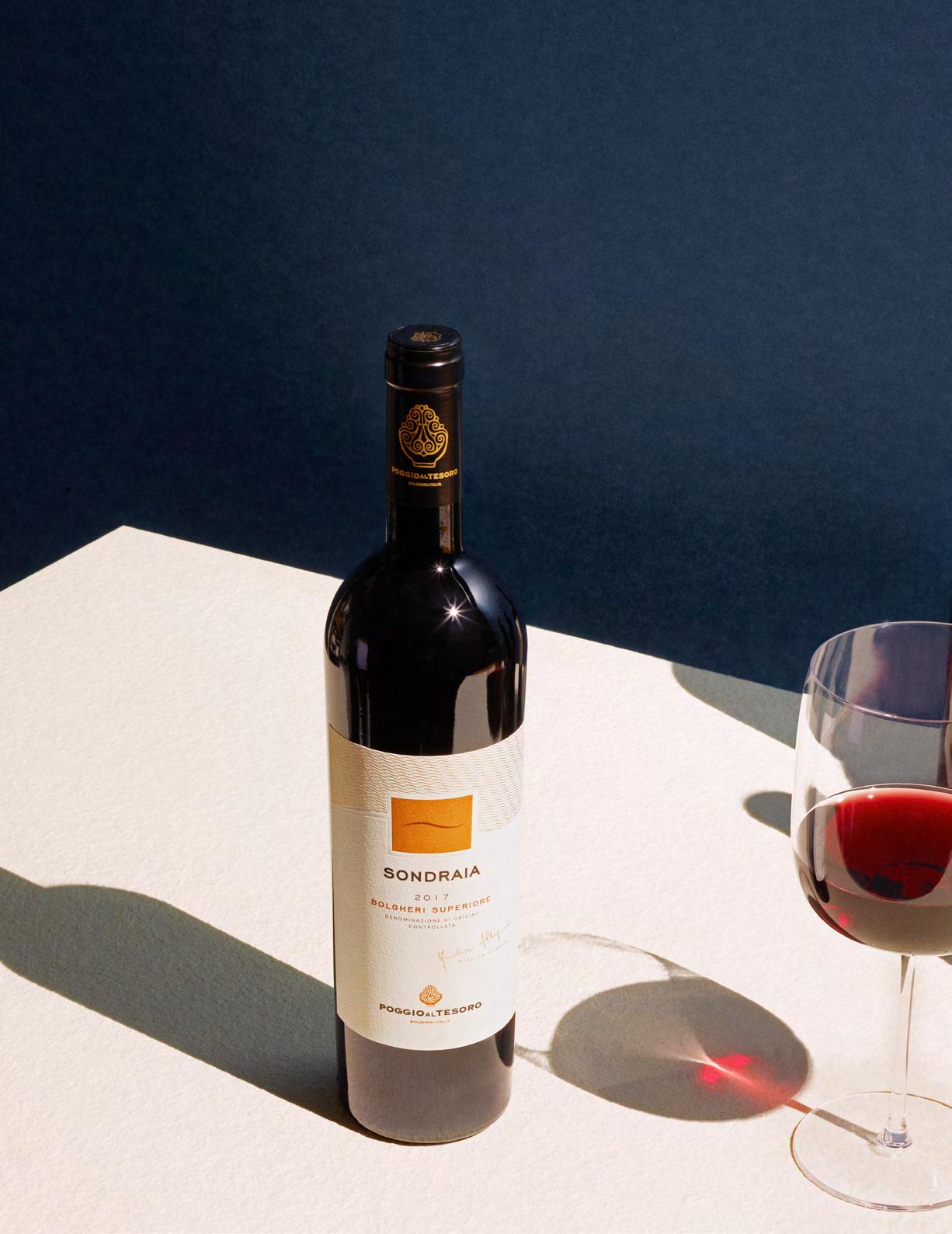
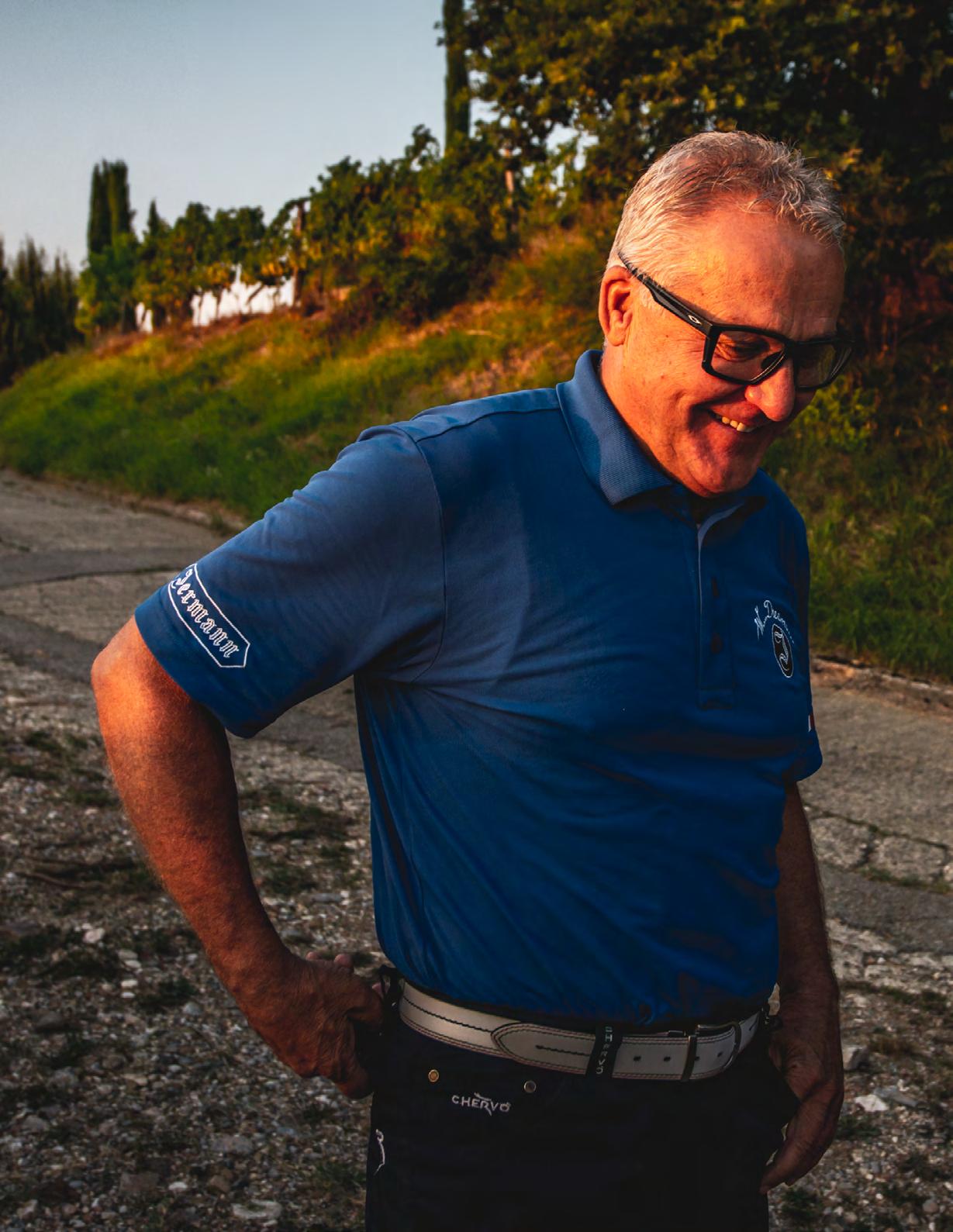
“In a speech at a party here at the winery organized for his 90th birthday, my father said something which stayed with me,” recalls Silvio Jermann wistfully. “He said I was always different from the other kids in the village, that I had a closed character. You see, it wasn’t easy growing up here. In my youth I had my own ideas, strong ideas that didn’t always agree with that of my parents. I wanted to work on these philosophies –realize my dreams.”
We’ve been talking for a little while, perched on the balcony of his former home in Ruttars, which overlooks the estate he established as a modern winery in 1975 with the seminal Vintage Tunina while only in his early 20s. Our conversation, so far, has been somewhat formal, informative yes, personal no. Our talk has circled Friuli, the north-eastern Italian region west of Veneto and bordering on Slovenia with its unique cultural and historic expression, his Austro-Hungarian Jewish heritage, which he hasn’t been able to fully trace, and the nuts and bolts of building a winery. Only now does Silvio Jermann open up.
I use the occasion to inquire about the house, a simple structure built to blend with the local Friulian architecture. “The winery was inaugurated on the seventh of the seventh 2007, and I was hoping to complete the family home on the ninth of the ninth 2009, but that didn’t happen. So, we aimed for the twelfth of the twelfth 2012, but that didn’t go through either. The house wasn’t completed until 2013, and there are only 12 months in the calendar,” he says, then smiles, clearly amused to share this story. “By that time, I had realized it’s not possible to mix work and private
life. To be free of mind, to create, you have to get away – you need separation. So, I moved to a house off the estate and began creating.” The original house is used to host guests and for wine tastings.
Throughout the winery, along with religious symbols, are references to astronomy and celestial objects. Dreams, the cultish wine that followed Vintage Tunina and gained Jermann international stardom, features 13 dots on one of its bottle labels. The idea is to interpret your own dreams, and through wine, seal the cosmic connection points between the drinker and Jermann. My host lets out a laugh when I mention this, then swiftly brushes past the subject.
Jermann farms two estates in Friuli: one in the region of Collio, the other in Isonzo. The area is famed for its white wines, with Jermann’s prime focus, therefore, on producing mainly whites. The wines here are creamy, complex, powerful and acid-rich; these are wines that embody the spirit of Friuli and its famed “ponca” soil.
Unique to this area, ponca is a friable mix of marl and sandstone that has a high pH and the ability to retain only necessary water resources while draining off excess (which is particularly important in Friuli’s hillside vineyards). Combined with the relatively cool climate of this northern latitude, these soils give the grapes juicy acidity, which balances the richness of the fruit. The soil itself looks like a hard rock but breaks easily, so vine roots can penetrate deep, as much as 15 meters, to benefit from nutrients. As a constant reminder of this prized land, a Ponca rock sits much like a sculpture in the estate’s courtyard.
TRUSTING HIS INSTINCTS AND WITH AN INVENTIVE, REBEL SPIRIT, SILVIO JERMANN HAS BEEN CREATING UNIQUE AND CULTISH WINES AT HIS FRIULI WINERY, AS HE TELLS VOICES EDITOR, NARGESS BANKS.
The fifth in a generation of grape growers and winemakers, on joining the family business in the early 1970s Silvio was clear in his mission to introduce novel farming practices and clean winemaking methods to Jermann. And he was about to hit the zeitgeist.
This was a time of profound changes on the Italian gastronomy scene. The “nouvelle cuisine” movement eschewed traditional rich food, championing a lighter, simpler cuisine made with fresh, local ingredients. Likewise, the wines of the time tended to be on the heavier side, bitter and often excessively alcoholic. Worst of all, they didn’t age at all well in the bottle, often oxidizing within a couple of years.
The young Silvio was a great admirer of Mario Schiopetto, the master of Italian white wine and a pioneer who, as part of a group of producers, was at the time setting out to radically modernize wine making and production. His method involved adapting ancient ways of grape growing and marrying this with clean, modern production methods. And he was causing quite the stir.
Silvio lights up when discussing Schiopetto. “He was looking to the techniques of German white wine producers for freshness, bouquet and a better balance of acidity, and to create wines that could age well in the bottle,” he tells me. “Schiopetto was a mentor to me. During my studies, whenever I could, I worked with him and he would explain what he was doing with great passion. He gave me energy and motivated me to go in this direction.”
Much like his tutor, Silvio learnt from old grape-growing traditions and in particular field blending. Most wineries plant their grape varieties separately and then blend them in the production process. Jermann, though, dedicates parcels of land to its individual wines: each plot will grow the grape varieties for that particular blend, all of which are harvested by hand on the same day and fermented together. So, rather than being a blend, the wines are made with a blend of grapes, which creates wines that are unique to this place and the exact moment of harvesting.
Silvio began rediscovering forgotten local varieties as well as cultivating ancient grapes. “Nowadays people talk of autochthone grapes and traditional winemaking, but back then in the 1970s no one did.” Even the Ribolla
Gialla, the most famous Friulian grape, wasn’t under DOC then. He also invested in modern methods of winemaking. This meant the gentle extraction of “free run” juice, followed by a long and cool fermentation in stainless steel, and then aging it for more than a year on the lees before bottling.
“My father didn’t agree with my ideas,” Silvio recounts. “He followed local ways, selling bulk wine that was bottled by others who were taking most of the profit. But I could see that the local market was limited, people wouldn’t pay more for their wine, and I knew I needed to take my wines through Italy to find the right customers.” And so, he created his first wine, Vintage Tunina, as a true expression of Jermann to take on the road.
“Vintage Tunina had to be full-bodied, elegant, for it to age well in the bottle and maintain its freshness and floral-ness,” he explains. To achieve this balance, while maintaining a strong link to Friuli, Silvio worked with half international varieties (Chardonnay and Sauvignon), the half indigenous grapes (Ribolla Gialla and Malvasia, with a touch of sweet Picolit) for a blend that he admits was created quite by chance.
“It was a little trial and error. The first 1973 vintage was good but I needed to perfect my blended wine, which I achieved with the 1975.” Released in 1977, with its equal parts power and precision, Vintage Tunina caused a sensation and Silvio became an icon in the wine world.
Bravely, Silvio priced Vintage Tunina double that of local wines. “My theory was that if you understood the wine, you would pay for it,” he says frankly. “I didn’t do any advertising. I put the bottles in the back of my car and with the Michelin Guide to the best restaurants, went around introducing Vintage Tunina, explaining our winemaking method. And I relied on recommendations and word-of-mouth.”
Then in 1987, came Dreams. Or more precisely: Where the Dreams Have No End – a wine that was to further secure Jermann’s place on the international scene.
During our interview I’ve been wanting to ask Silvio how he got to dedicate his wine to “Where The Streets Have no Name,” the powerful opening track to The Joshua Tree – U2’s album released that same year that went on
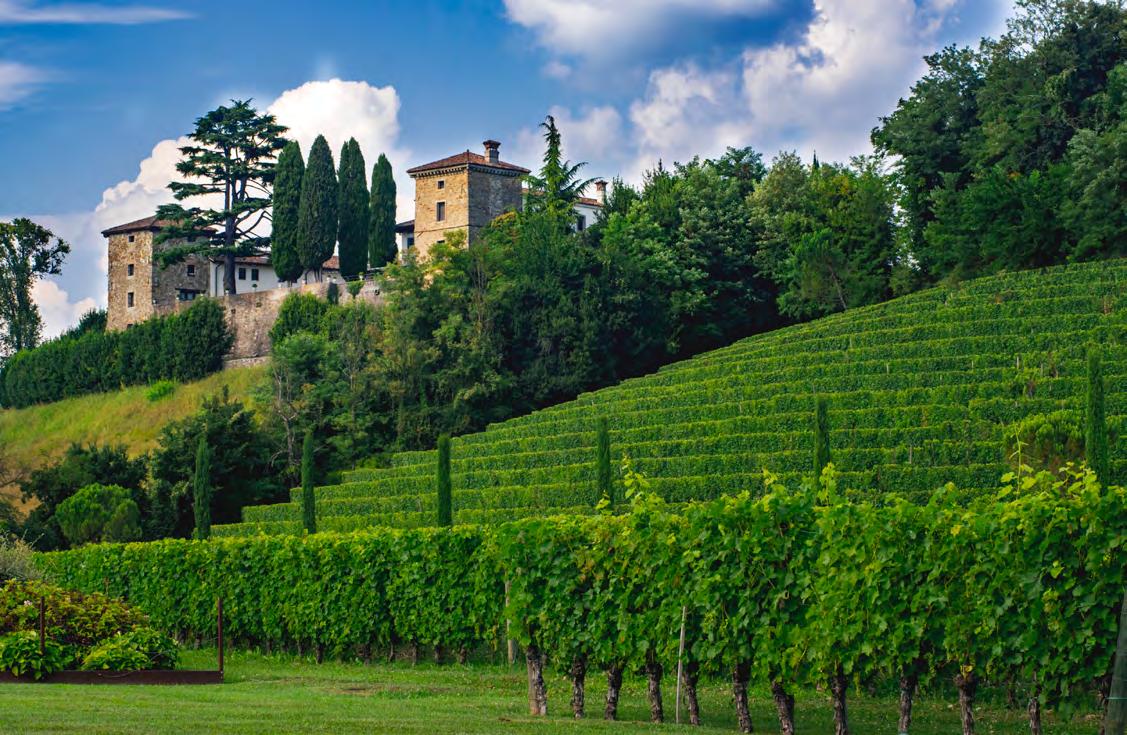


CLOCKWISE FROM LEFT: SILVIO JERMANN CONSIDERS; EARLY BOTTLINGS OF VINTAGE TUNINA AND DREAMS IN THE CELLAR; JERMANN’S VINEYARDS IN RUTTARS
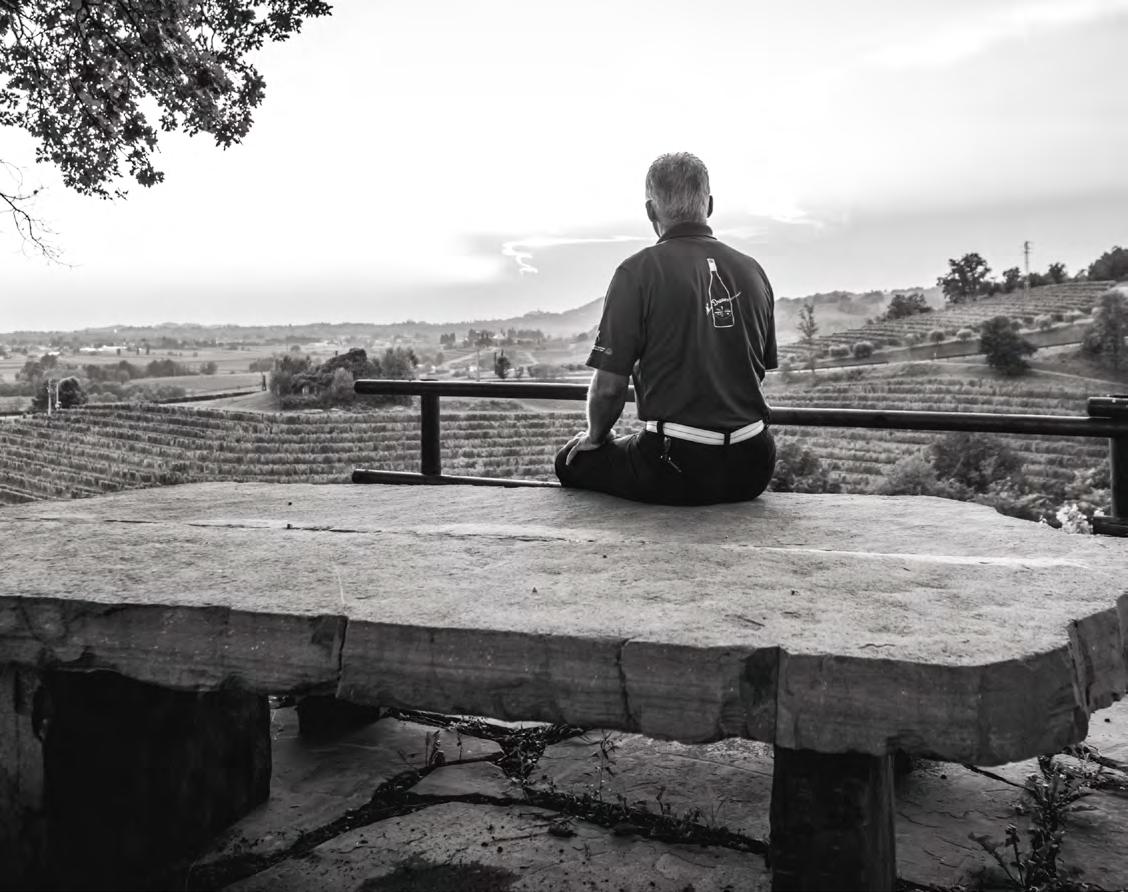
“MY FATHER DIDN’T AGREE WITH MY IDEAS,” SILVIO RECOUNTS. “HE FOLLOWED LOCAL WAYS, SELLING BULK WINE THAT WAS BOTTLED BY OTHERS WHO WERE TAKING MOST OF THE PROFIT...I KNEW I NEEDED TO TAKE MY WINES THROUGH ITALY TO FIND THE RIGHT CUSTOMERS.”
to win a Grammy Award for best performance music video. Earlier, I’d admired a bottle of Dreams in the winery signed by Bono and U2 band members.
Although I wasn’t expecting quite such a colorful reply: “The fashion in the early 1980s was to use barrique to help with the quality of the white wine, but I didn’t feel it represented our local style. Then in 1987, I took a break. I was in my 30s and divorced from my first wife. I had grown up so fast, working hard from a young age to prove and show what I had in my head. I had lost my youth,” he reveals reflectively.
Being his most creative to the sound of music, Silvio became hooked on two particular songs on U2’s album: “With or Without You” and “Where The Streets Have no Name,” with the young winemaker working through the night, night after night, to these soundtracks on full blast in the winery.
“I wanted to dedicate a wine to this music; do something different to what I’d been doing with the Tunina. Since the music was international, I decided to create an international style wine. So, I worked with the Chardonnay grape, experimenting on how best I can age this in barrique but still represent this region. For the name I changed ‘Streets’ to ‘Dreams’ since this was my dream.” The bottle I’d spotted was signed by U2 after a concert in Venice. Do they like the wine, I ask. He laughs. “I hope so.”
Dreams is Jermann’s only wine that is barrel-fermented and aged in French oak (Vintage Tunina and Capo Martino, another fine white, are aged in Austrian Oak to maintain their grassiness and freshness). Dreams uses 97 percent Chardonnay and the rest is a Silvio secret.
“There are no strict rules, I work with each vintage individually. The two to three percent ‘other’ grape gives a touch of difference – it’s a signature,” he tells me. The wine doesn’t undergo malolactic fermentation to highlight the tension between the oaked Chardonnay and the natural acidity from the ponca soil, but there may be a small percentage of malolactic, depending on the vintage. A truly unique wine, Dreams quickly achieved cult status, and went as far as to play a pivotal role in Disney’s 1998 box-office hit The Parent Trap starring alongside Dennis Quaid, Natasha Richardson, and Lindsay Lohan in her feature film debut.
In 2016 in Rome, the Italian press elected Jermann as “the most representative producer of Italian white
wines.” Silvio’s father passed away four years ago, so he got to witness Jermann’s success. “Yes, he was very proud,” he says.
Jermann is about to enter a new chapter. Silvio has agreed to a partnership with the famed Antinori family, while keeping the vineyards over the hill in Slovenia, planting mainly Ribolla. My grandmother would often point to the hills towards Slovenia and talk about the past. I see this as a way of connecting the past and the future.” And the next adventure, I ask: “My next vintage will be in Slovenia. You will be able to taste it in the next seven to eight years.”
TO VIEW THE FIRST ISSUE OF VOICES, PLEASE SCAN THE QR CODE BELOW)
The 2020 vintage was chaotic with a dry spring and a rainy summer. A hot August helped bring everything into focus, but humidity was an issue and producers reduced yield to maintain quality.
“After having had a relatively warm but quite dry first part of the year, from May to July it rained more than usual and temperatures were a bit below the average. Nonetheless, thanks to careful and well-organised work carried out in vineyards, vines could pass all their development stages in a proper way. August was quite warm but some intense rainfalls provided the vineyards with good water reserves so that the grapes could ripen gradually.
The results are in line with our expectations: the vintage 2020 showed a yield below the average but with high quality, so we are satisfied.”
Harvest occurred on September 10th.
GRAPES Chardonnay (97%), ‘Other’ (3%)
VINEYARDS 7ha in Friuli; Ponca soils (marl and sandstone); 90m asl; Guyot; Dryfarmed; Sustainable viticulture
AGEING 11 months in 300L French oak barrel, used for 5 passages (20% new, 20% second-pass, 20% third -pass...)
Filtered & Fined
PRODUCTION 40,000 bottles

Imported by Maze Row Wine Merchant @mazerowwines mazerow.com Italian table wine, ©️2022 Maze Row Wine Merchant, Healdsburg, CA, USA. All rights reserved.